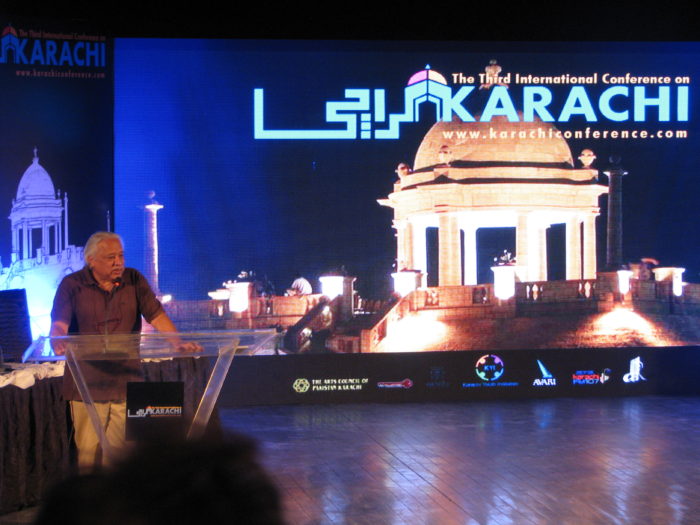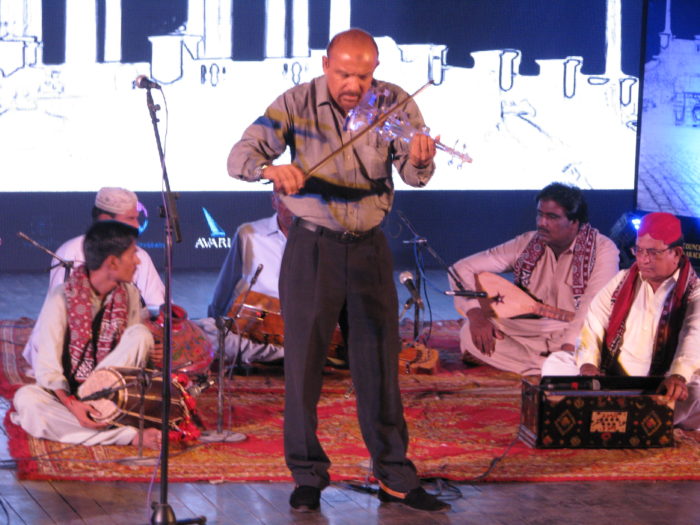Karachi Conference 2015
By Deneb Sumbul | Newsliners | Published 10 years ago
The third, three-day Karachi Conference (November 6-7) at the Karachi Arts Council was a commendable initiative, but it had its highs and lows. Strangely enough, there was hardly any promotion of this significant event. Word got around only a few days prior to the opening. So while the auditorium was packed to capacity at the beginning and closing of the conference, there were long spells when the crowd was embarrassingly thin — and the speakers faced a sea of empty chairs. It was even more painful to watch the audience shrink even further when some of the speakers, to put it politely, couldn’t engage the audience. Several of the presentations were made in English. One wishes they were made in Urdu given the composition of the audience.
 Day one of the conference was dedicated to documentaries, which were decidedly a hit. Commencing with long films, they were followed by 10-minute shorts made by students from various media schools. A couple of the long-duration documentaries held the audience completely captive, such as Lyari, the Highway of Tears and The Mystery of the Persian Mummy. But some, like The Hindu Mosaic of Tharparkar, got lost in translation. It was more like a 45-minute religious discourse and was paced so slow, that it lost most of the audience to the fresh air outside, either for tea or for chit-chat.
Day one of the conference was dedicated to documentaries, which were decidedly a hit. Commencing with long films, they were followed by 10-minute shorts made by students from various media schools. A couple of the long-duration documentaries held the audience completely captive, such as Lyari, the Highway of Tears and The Mystery of the Persian Mummy. But some, like The Hindu Mosaic of Tharparkar, got lost in translation. It was more like a 45-minute religious discourse and was paced so slow, that it lost most of the audience to the fresh air outside, either for tea or for chit-chat.
The second day’s keynote address was by the acclaimed Nepalese journalist, Kanak Mani Dixit, who stressed the importance of ‘South Asian-ism’ and the need for connectivity and collaboration between South Asian countries, particularly the SAARC countries. This was especially important for Pakistan, he remarked, as it is becoming more and more isolationist in its policies, to the detriment of its economy and its people, which he elaborated with several examples.
‘Reminiscence’ was a strong theme and, through assorted speakers, one learnt that Karachi with its relatively short history of 200-plus years, boasted some very rich cultures and traditions. The talks drew attention to the city’s fast-fading heritage sites, and additionally, focused on the magnificent contributions of communities like the Parsis towards the city’s development. The efforts made by Karachiwallas in mapping Karachi’s populace and the preservation of historical structures was also highlighted. While most of these sessions were informative, some were too technical for a layman’s understanding.

‘The Karachi Police’ was a session where one would have expected a crush of civil society. Alas, its slim audience didn’t do it justice. Jameel Yusuf’s presentation, in particular, was not only interesting but one of the few that provided possible solutions to the city’s criminal behemoth. It would have generated a lot of debate had there been enough people, or had it been given enough time. Additionally, it would have greatly benefited the social mobilisers in the non-profit sector — the change-makers who raise awareness in the communities. Also, it could have given a fresh perspective on the social pressures that can be applied on the local governments to deliver.
The most positive aspect of the conference was that it was attended by a lot of students, who were brought in by their schools. The distinguished town-planner/architect, Arif Hassan stressed the importance of films in educating people, and this was evident from what Alina Rizwan, a 10th grade student present along with a group of 25 girls from Nasira School, said: “I liked the documentaries the best. We really don’t know Karachi. There are so many misconceptions about other faiths. I learnt their point of view. I wish there were more such events we could go to.”
During the closing performance by folk musicians, the audience was delighted by the spirited dancing of the students. The infectious notes of some of the traditional folk musicians would have given the rocker lead guitarist, Slash, a run for his money.
Hopefully, the Karachi Conference will continue and grow in the coming years. But for the event to be truly successful, it needs to draw larger crowds, as well as be more interactive with the audience. An eager 10th grade student, Shawkat Ali from Lyari, asked me, “How can I be a part of this and how can I ask them to bring these sessions to our part of town or to my school?” Perhaps, the next time round, a conference information desk would be helpful.
This article was originally published in Newsline’s December 2015 issue.
The writer is working with the Newsline as Assistant Editor, she is a documentary filmmaker and activist.


